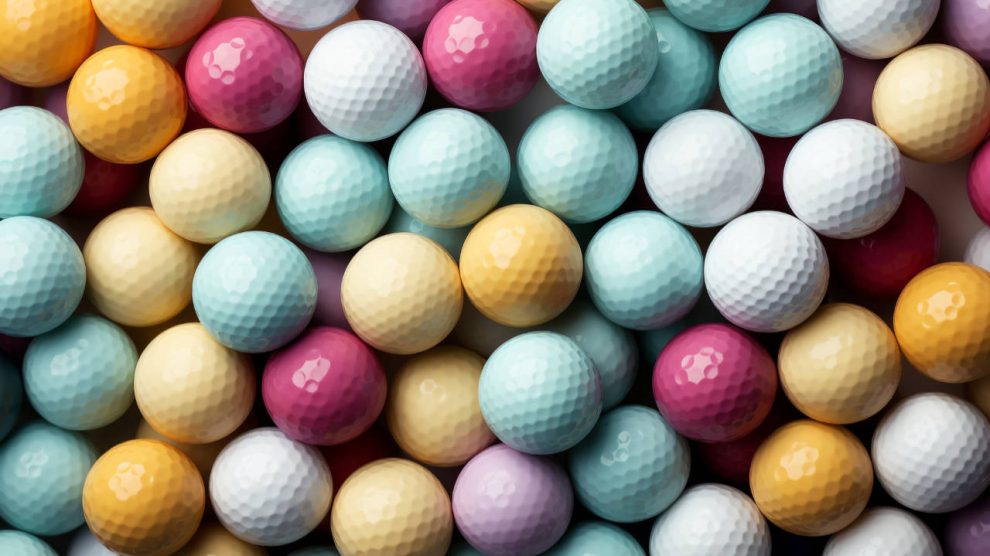Let’s be honest. When we dream about golf glory, we’re picturing a perfectly balanced driver, a buttery-soft putter, or a magic-wand wedge. The golf ball is often an afterthought, tossed into the cart bag by the dozen without a second thought. But what if we told you that you’re overlooking your most consistent piece of equipment?
Choosing the right golf ball is like finding the right running shoe. You wouldn’t run a marathon in flip-flops, so why play your most important round with a ball that doesn’t suit your game? This guide is your caddie in the pro shop, here to help you navigate the world of dimples, layers, and compression so you can find your perfect match.
It all starts with the core: understanding construction
The first step to ball nirvana is understanding how they’re built. Think of it as an onion, but one you definitely want to hit with a club.
- 2-Piece Balls: The Distance King. This is the workhorse. A large, solid rubber core is wrapped in a tough, cut-resistant cover (usually Surlyn). This design maximizes energy transfer, making it ideal for beginners and high-handicappers who need maximum distance and durability. It’s the reliable pick that won’t let you down, but it offers less feel and spin control around the greens.
- 3-Piece Balls: The All-Rounder. Here’s where things get interesting. A core is surrounded by a “mantle” layer, which is then covered by a softer urethane or Surlyn cover. This middle layer helps control spin: lower spin off the driver for more accuracy, and higher spin with your wedges for stopping power on the green. This is the go-to for a huge range of mid-handicap players looking for a balance of distance, feel, and control.
- 4-Piece (and 5-Piece!) Balls: The Tour Pro’s Tool. The ultimate in golf ball engineering. With multiple mantle layers, manufacturers can fine-tune performance for every club in the bag. These balls are designed for players with high swing speeds who can compress them effectively. They offer exceptional greenside spin, a soft feel, and penetrating ball flight. If you’re a low-handicap player seeking total control, this is your arena.
The feel factor: compression is key
Compression is a fancy term for how much a golf ball “squishes” when you hit it. It’s measured by a number, typically ranging from 30 (very soft) to 100+ (very firm).
- Low Compression (Below 70): These are soft-feeling balls that compress easily, even with slower swing speeds. They help maximize distance for juniors, seniors, and players with moderate swing speeds. They feel great off the putter face and can help add a few precious yards.
- Mid Compression (70-90): The sweet spot for the average golfer. They offer a great blend of feel and distance without requiring a 120 mph swing speed to get the most out of them.
- High Compression (90 and above): Built for bombers. If you have a fast, powerful swing, a high-compression ball will give you the feedback and control you crave. A slow swing speed won’t be able to compress it properly, leading to a loss of distance.
Match your Ball to your game: a simple guide
The High Handicapper / Beginner: You want forgiveness and distance. Look for: A 2-piece, low-compression ball with a Surlyn cover. It will be long, straight, and won’t cut up after a few mis-hits. Think Titleist TruFeel, Callaway Warbird, or Srixon Soft Feel.
The Mid-Handicapper (The Aspiring Player): You’re consistent off the tee and starting to focus on your short game. Look for: A 3-piece ball, either urethane or Surlyn cover, with a mid-compression rating. This will give you that ideal blend of distance, feel, and some stopping power. Check out the Titleist Tour Soft, TaylorMade Project (a), or Bridgestone e12 Contact.
The Low Handicapper / Competitor: You have the swing speed and skill to demand performance. You need control, spin, and a predictable flight. Look for: A 3-piece or 4-piece urethane-covered ball with a high compression. This is the realm of the Titleist Pro V1/V1x, TaylorMade TP5/TP5x, and Callaway Chrome Soft. Don’t be afraid to test different models within this category—the difference between a V1 and a V1x, for instance, is all about personal preference for flight and spin.
The final and crucial step: test them!
Reading this article is one thing, but feeling is believing. Here’s your homework:
- The Wedge Test: Hit a few pitch shots with a premium urethane ball and a distance ball. Notice how the urethane ball bites and stops? That’s control you can’t get from a rock-hard surlyn ball.
- The Putter Test: Simply putt a few balls on the practice green. The sound and feel vary dramatically. Do you prefer a soft “thud” or a firmer “click”?
- Play a Two-Ball Round: On a casual day, play two different balls for a few holes. See which one gives you more confidence and better results.
The right golf ball won’t magically fix your slice, but it will ensure your good swings are rewarded to their full potential. It’s the one piece of equipment you use on every single shot. So give it the respect it deserves, and you might just find those extra yards, that extra spin, and that extra bit of fun that makes all the difference. Now go out there and find your ball!














